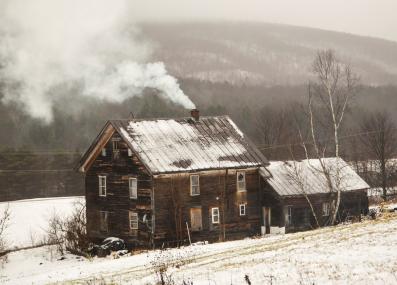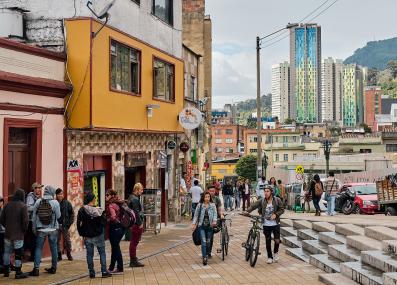Have a question?
If cities require new buildings to use 100% electric heat, will that raise or lower their greenhouse gas emissions?
Electric heating might cause a short-term rise in emissions in areas that get their electricity from fossil fuels. But without electric heat, we can’t get greenhouse gas emissions to zero.
June 7, 2021
Energy to power buildings is one of the largest sources of greenhouse gas emissions globally.1 Buildings contribute to greenhouse gas emissions when they use electricity from a grid powered by fossil fuels, or when they burn fossil fuels on-site for heating or cooking appliances.
Lowering greenhouse gas emissions from buildings requires two steps. First, we need all buildings to be free of on-site fossil fuels. Second, we need a clean electricity grid that these buildings can then rely on for all of their energy.
Today, a building with all-electric heat may generate more emissions than a building with on-site fossil fuels, depending on the electric grid it relies on.2 That’s because the fossil fuel burned on-site would usually be methane gas, while the electric heat may depend on electricity from a coal-fired power plant—and coal releases almost twice as much carbon dioxide when burned as methane gas does.3
But calculating the exact emissions of each type of heating gets complicated quickly. Drilling to extract methane gas from the ground also generates emissions. So does transporting either methane gas or coal. Electricity grids also rely on different sources of fuel at different times of year or times of day.
Instead of getting lost in this dizzying array of variables, says Harvey Michaels, a lecturer on energy management at MIT, it makes more sense for policy to start pushing us in the right direction. Because electricity grids are getting cleaner, he says, we should electrify buildings now to meet long-term climate goals.
"If we're going to stop climate change, the grid has to become totally, all the way, carbon-free," says Michaels. "So if you're using electricity in a building, you're not generating carbon on-site. If that electricity isn't carbon-free yet, it will be carbon-free in the future. So I don't think it's really worth worrying about that."
It’s worth thinking about how cities would work towards zero emissions in buildings if they do not require electric heating. In this case, most new buildings would still get natural gas lines for heating. This may result in a short-term reduction in emissions, but the lines would need to be replaced once the grid becomes greener—a waste of time and money.
According to Michaels, cities that aspire to go carbon-free should require new buildings to install heat pumps for electric heating rather than running lines for gas. These pumps work similarly to an air conditioner by pulling heat from outside of a building and bringing it inside using electricity. In efficient new buildings, heat pumps should be able to provide all of their heating needs.
"When you build something from scratch, it's easy to make it extremely efficient," Michaels said. "But not all older buildings can do this."
Cities face a different problem with older buildings that weren’t built for electric heating. Heat pumps, unlike gas furnaces, become less efficient the colder it is outside. In a cold region, on a cold day, in an old, inefficient house, a heat pump may need more electricity than the grid can readily provide.
To avoid straining the grid, older building owners should plan to maintain their old heating systems to meet their full heating needs on very cold days, and install a heat pump for less cold days. To do this, Michaels tells building owners to consider getting new air conditioning units that also include heat pumps as a feature.
"The answer for everyone should be that when your air conditioner breaks, put one in that includes a heat pump," Michaels said. "Then, long term, we will find a carbon-free solution for that last bit of heat."
Thank you to David Herman of Clinton, New York, for the question. You can submit your own question to Ask MIT Climate here.
Submit your own question to Ask MIT Climate
Get the latest from Ask MIT Climate monthly in your inbox
1 In 2019, 39% of all energy-related carbon emissions came from buildings and construction. International Energy Agency: Global Status Report for Buildings and Construction 2019.
2 It's becoming rarer and rarer for a city to have an electric grid so dirty that using it to heat homes and businesses creates more emissions than burning gas or oil. In 2020, the Rocky Mountain Institute published a report analyzing seven diverse large and midsize U.S. cities, and found that in all of them, all-electric heating and cooling leads to lower carbon emissions than standard mixed-fuel homes, and the savings in emissions were greater than 50% for six of the seven cities. Read the full report ("The New Economics of Electrifying Buildings," Rocky Mountain Institute, 2020) or a brief summary of key findings, "All-Electric Homes: A Win for the Climate and the Economy."
3 U.S. Energy Information Administration: Carbon Dioxide Emissions Coefficients, 2016. Accessed June 6, 2021.










